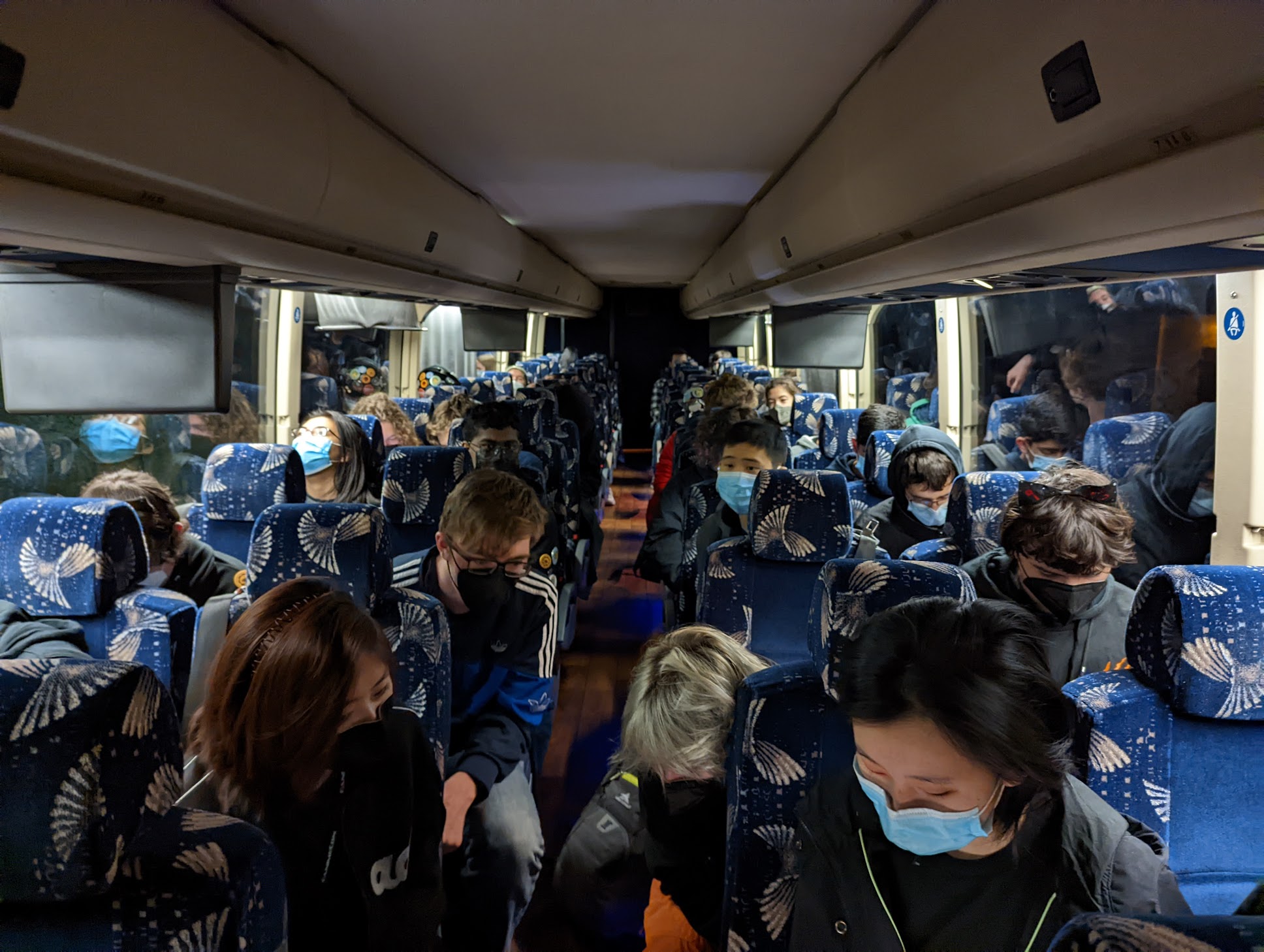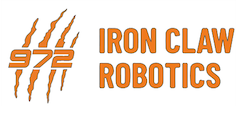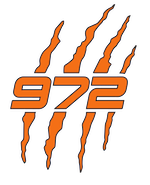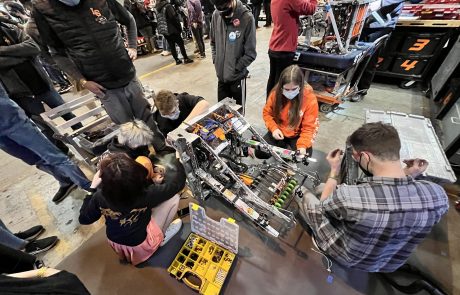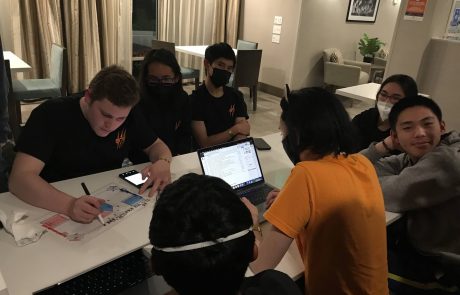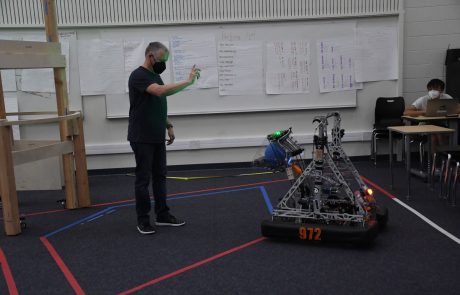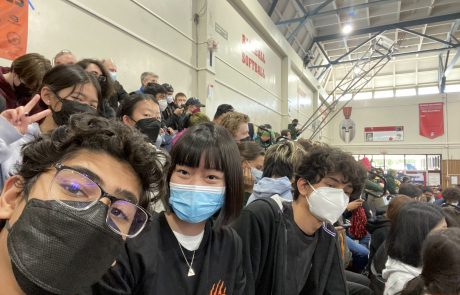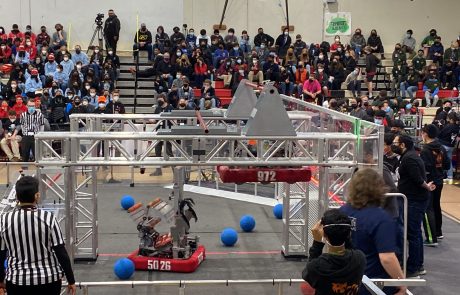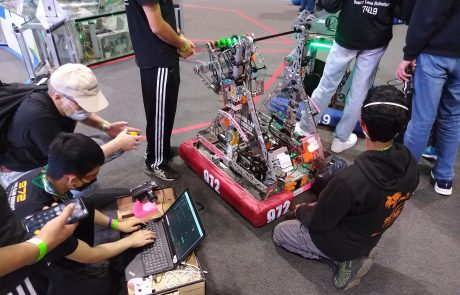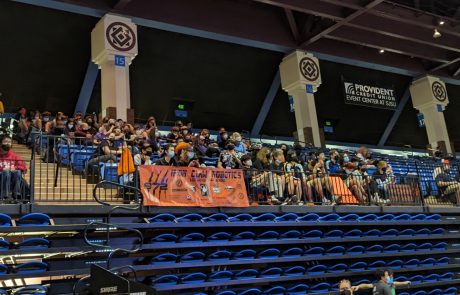Excited to be back, yet well-aware of the challenges we would face due to coming back from the COVID-19 pandemic, we set humble expectations for our season and robot. We instantly recognized the importance of a consistent climb and set our initial goals as the high climb while shooting low hub. These expectations were reinforced at our first competition, the Hueneme Port Regional (HPR), and we even started shooting into the high hub as the competition went on. After our average performance, coming in 25th place after qualification matches and losing in the quarter-finals of the play-offs, we came back reinvigorated to improve on our robot.
Our unexpected success in shooting into the high hub at HPR inspired us to significantly change our robot capability goals ahead of our next regional, the Monterey Bay Regional (MBR). After analyzing areas of improvement from the Week 1 competition, we set our eyes on a traversal-climbing robot that can shoot consistently into both the high and low hub. Specifically, for the latter goal, we started integrating computer vision into our robot using Limelight, which was the first time we successfully used vision. After much tuning, we became a fairly consistent high-hub shooter.
The improvements to our robot paid dividends, to say the least, at MBR. Not only did we maintain a 100% success rate at climbing to traversal when we intended to, our Limelight-powered shooting saw us attain a shooting accuracy of about 80% into the high hub. Our strong overall performance was evident by our 4th place ranking after qualifications. Although we crashed out at the quarter-finals following unexpected autonomous issues from our alliance partner, we were inspired by what was easily our best-ever performance at a regional.
After making even more improvements to our Limelight-powered shooting ahead of the Silicon Valley Regional (SVR), we frequently practiced our robot at neighboring Team 649’s practice field. Refining our shooting at their practice field was crucial to our performance at SVR, in which we carried most of the points in all of our qualification matches. While our extremely strong performances were not necessarily reflected in our 14th ranking, we were excited to be alliance partners with Team 649 and Team 766. After some well-fought matches against Team 971’s alliance, in one of which we only lost by 5 points, we crashed out of SVR at the semi-finals.
Even though we did not qualify for the FIRST Championships at Houston, we were extremely proud with every aspect of our team, from robot design to team spirit. This was truly a record-breaking season in which we saw new heights in terms of ranking and robot capabilities, and we cannot wait for an even better season next year!
